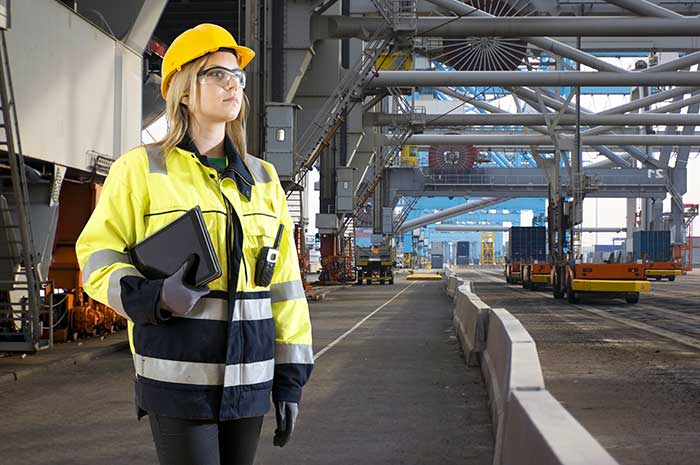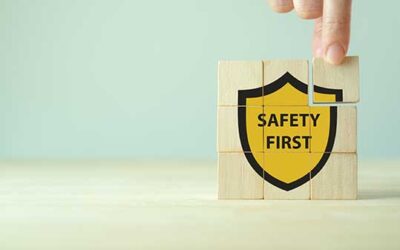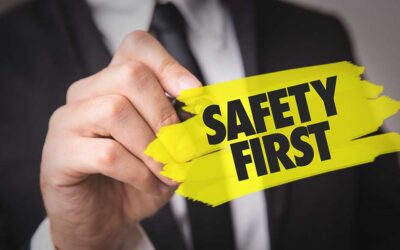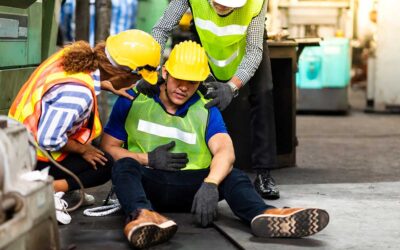Establishing a Safety-First Culture
In the world of Human Resources, the safety of employees is not just a policy but a cornerstone of a thriving workplace. Establishing a safety-first culture is an ongoing process that requires commitment, communication, and a proactive approach to risk management. It’s about creating an environment where safety is ingrained in every aspect of the business, from the break room to the boardroom.
The Foundation of a Safety-First Culture
A safety-first culture is built on the understanding that everyone has a role in preventing accidents and injuries. It starts with leadership setting the tone, demonstrating that the workforce’s well-being is a top priority. This commitment must then be echoed throughout the organization, with managers and employees at all levels responsible for maintaining a safe work environment.
Strategies for Fostering a Safety-First Mindset
HR departments can employ various strategies to foster this culture:
- Leadership Training:
- Equip leaders with the knowledge and tools to promote safety.
- Encourage leaders to lead by example, showing that safety is a priority in their daily actions.
- Employee Engagement:
- Involve employees in safety discussions and decision-making.
- Recognize and reward safe behavior to reinforce the message that safety matters.
- Communication:
- Keep safety in the limelight through regular updates, newsletters, and meetings.
- Use clear, concise language to ensure all safety procedures are understood.
- Continuous Learning:
- Offer ongoing training and education to keep safety front and center.
- Learn from near-misses and incidents to prevent future occurrences.
Checklist for Creating a Safety Culture
- Leadership commitment to safety.
- Regular safety training and updates.
- Employee involvement in safety programs.
- Recognition for safe behavior.
- A system for reporting and learning from safety incidents.
“Safety doesn’t happen by accident. It’s a culture, crafted and nurtured, and it starts at the top.” – Safety Expert.
The Impact of a Safety-First Culture
The benefits of a safety-first culture extend beyond compliance and risk mitigation. It leads to higher employee morale increased productivity, and can significantly reduce costs associated with workplace accidents and insurance. Moreover, it positions the company as an employer of choice, attracting talent who value a workplace that cares for their well-being.
Enhancing Situational Awareness
In the bustling environment of modern workplaces, situational awareness is the guardian angel that often goes unnoticed, yet its presence is always felt. It’s the difference between a close call and a call to emergency services. Human Resources departments are the custodians of fostering this crucial awareness, ensuring that employees are not just present at their jobs but are cognizant of their environment and the potential hazards.
Situational awareness is not a skill one is born with; it’s honed through training and practice. It’s about understanding what is happening around you, anticipating potential issues, and reacting swiftly and effectively. For HR professionals, the challenge lies in embedding this awareness into the company culture without causing alarm or complacency.
Training is the cornerstone of situational awareness. It starts with orientation sessions that introduce new hires to the safety protocols of their new environment. But it doesn’t end there. Ongoing training sessions are vital, serving as refreshers that keep safety in employees’ minds. These sessions can take many forms, from workshops to e-learning modules, and they cover everything from recognizing the signs of a co-worker in distress to emergency evacuation procedures.
Real-life examples serve as powerful tools for understanding the importance of situational awareness. Take, for instance, the case of a manufacturing plant where an employee noticed an unusual vibration in a piece of machinery. Because they were trained to be aware of their surroundings and to report anomalies, they alerted the maintenance team, averting what could have been a catastrophic failure. Such stories, shared within the organization, teach and inspire.
The role of HR in this is multifaceted. They are the organizers of training sessions, the communicators of safety successes, and, sometimes, the mediators when things go wrong. They must ensure that the lines of communication are always open, that employees feel comfortable reporting concerns, and that those concerns are addressed promptly and effectively.
Technology also plays a pivotal role in enhancing situational awareness in the digital age. HR departments can leverage various tools to simulate potential scenarios or to provide real-time alerts. For instance, apps that send notifications about weather conditions or other external factors affecting the workplace can be invaluable.
Yet, with all the training and technology in the world, the human element remains central. It’s about creating an environment where every employee feels responsible for their safety and that of their colleagues. It’s about building a community at work where everyone looks out for each other, and safety is not just a policy but a way of life.
Comprehensive Safety Training Programs
Regarding workplace safety, knowledge is more than just power—it’s protection. Comprehensive safety training programs are the bedrock upon which a company builds a secure working environment for its employees. The role of HR in this endeavor cannot be overstated; they are the architects of these programs, ensuring that every employee, from the ground floor to the executive suite, understands their role in maintaining a safe workplace.
Crafting the Curriculum
The first step in developing a safety training program is identifying the core topics most relevant to the company’s operations. This could range from general ergonomics to the handling of hazardous materials. HR departments must work closely with safety officers and operations managers to create a curriculum that covers all necessary areas without being overwhelming.
Engagement and Retention
A common challenge with safety training is ensuring that the information presented is retained and applied by employees. To combat this, HR professionals are turning to interactive training methods. This includes hands-on simulations, gamified learning modules, and even virtual reality experiences that allow employees to practice their response to safety scenarios in a controlled, risk-free environment.
Beyond the Basics
While it’s crucial to cover the basics, such as fire safety and first aid, comprehensive programs also delve into less obvious topics. This includes workplace violence prevention, stress management, and even safe driving practices for those whose roles include travel. It’s about creating a holistic safety mindset that employees carry with them, regardless of where or what they do.
Legal Compliance and Beyond
HR’s responsibility is to ensure that all training programs comply with local, state, and federal regulations. But the most forward-thinking HR departments go beyond mere compliance. They seek to instill a sense of safety stewardship in every employee, creating advocates for safety rather than mere followers of rules.
Measuring Success
The effectiveness of a safety training program is not just in its delivery but also in its outcomes. HR departments must establish metrics to measure the success of their training initiatives. This can include post-training assessments, regular refreshers, and monitoring of workplace incidents to identify areas for improvement.
Continuous Improvement
The work of HR in safety training is never done. As regulations change and new risks emerge, training programs must evolve. This requires a commitment to continuous learning and improvement, ensuring every employee is equipped with the most current and effective safety knowledge.
Conducting Regular Emergency Drills
At the heart of every robust workplace safety program lies the unglamorous yet indispensable practice of emergency drills. The HR department, often the unsung heroes in this narrative, plays a pivotal role in orchestrating these life-saving rehearsals. It’s not just about ticking a box on a compliance checklist; it’s about instilling a sense of preparedness that can make the difference between safety and calamity.
Why Drills Matter
Emergency drills go beyond routine; they are critical simulations preparing employees for the unexpected. In a fire, earthquake, or any other emergency, the muscle memory created by regular drills can guide employees to safety almost instinctively. It’s this muscle memory that HR aims to cultivate through meticulously planned drills.
Types of Drills for Different Scenarios
The type of drill conducted can vary greatly depending on the potential risks identified within the workplace. Fire drills are the most common, but others, such as lockdown drills, severe weather drills, and even active shooter drills, are becoming increasingly prevalent. Each type of drill addresses specific scenarios, ensuring that employees know how to act swiftly and appropriately.
Planning and Scheduling Drills
HR’s role in planning and scheduling drills is a complex puzzle of legal compliance, employee schedules, and business operations. It’s a delicate balance to strike, ensuring minimal disruption while maintaining the drill’s effectiveness. The scheduling must be random to some extent to avoid predictability yet structured enough to cover all shifts and departments over time.
Documentation and Debriefing
Documentation is a critical component of any drill. HR must record the date, time, duration, and any issues encountered during the drill. This documentation serves as a legal record and a tool for improvement. Following each drill, a debriefing session is crucial to discuss what went well and what areas need improvement. It’s a continuous loop of planning, executing, documenting, and refining.
Engaging Employees in Safety
Engagement is key. HR professionals must find creative ways to encourage participation and emphasize the importance of drills without causing alarm. It’s about creating a culture where safety is everyone’s responsibility. Engaging employees through safety committees or incentive programs can lead to more effective drills and a safer workplace overall.
The Role of Technology in Drills
Advancements in technology offer new avenues to enhance emergency drills. From apps that track participation to virtual reality simulations that provide an immersive experience, technology is changing how drills are conducted. HR departments that leverage these tools can provide more engaging and effective training.
Provision and Maintenance of Safety Equipment
In the landscape of workplace safety, the provision and maintenance of safety equipment stand as critical pillars. Human Resources departments bear the significant responsibility of ensuring that personal protective equipment (PPE) and safety gear are available and maintained to the highest standards.
The Lifeline of PPE in Industry
Personal protective equipment is the first line of defense against workplace hazards. From hard hats in construction to antistatic wrist straps in electronics manufacturing, each piece of equipment serves a vital role in protecting employees. HR’s role transcends the mere distribution of PPE. It involves a thorough understanding of the specific needs of various organizational roles and the potential risks employees face.
A Checklist for Safety Gear Acquisition
HR professionals must work closely with safety officers to compile a comprehensive list of required safety gear tailored to their industry. This list is not static; it evolves as new risks emerge and technology offers new protection solutions. The checklist is a living document reflecting the organization’s commitment to safety.
Maintenance: The Unsung Hero of PPE
The best safety equipment may fail if not properly maintained. Regular checks and maintenance schedules are as crucial as the equipment itself. HR departments should establish clear protocols for inspecting, cleaning, and replacing safety gear. These protocols ensure that equipment functions as intended when it’s needed most.
The Human Element
Behind every piece of safety equipment is an employee whose well-being is paramount. HR’s mission is to humanize the provision and maintenance of safety gear, ensuring that employees have access to PPE, understand its importance, and feel valued by their employer’s commitment to their safety.
Regular Facility and Equipment Inspections
The unglamorous yet critical task of regular facility and equipment inspections is at the heart of every workplace safety strategy. It’s a process that demands meticulous attention to detail and a proactive approach to hazard prevention. The HR department, often seen as the custodian of organizational well-being, is pivotal in coordinating these safety audits, ensuring that every nook and cranny of the workplace meets the highest safety standards.
The Nuts and Bolts of Safety Audits
Safety audits are not just about ticking boxes on a checklist. They are comprehensive evaluations examining how equipment and facilities align with safety regulations and best practices. This includes examining machinery for wear and tear, ensuring that emergency exits are marked and unobstructed, and verifying that all safety signage is up to date and visible.
HR’s Role in the Inspection Orchestra
HR professionals orchestrate the inspection process by bringing together various department heads, safety officers, and maintenance teams. They ensure that inspections are carried out systematically and that findings are documented meticulously. This documentation is not just for compliance purposes but serves as a roadmap for future safety enhancements.
From Findings to Action
The true value of inspections lies in the actions taken post-audit. HR must ensure that any issues identified are addressed promptly. This could range from scheduling repairs to replacing outdated equipment. It’s a continuous cycle of evaluation and improvement, all to safeguard the workforce.
Empowering Employees with Knowledge
HR can empower employees by involving them in the inspection process. This not only fosters a safety culture but also equips employees with the knowledge to spot potential hazards and understand the importance of reporting them.
Technology as an Ally
In today’s digital age, HR departments can leverage technology to streamline the inspection process. From mobile apps that allow for real-time reporting to software that tracks equipment maintenance status, technology can be a powerful ally in ensuring workplace safety.
Prioritizing Mental and Physical Health
The correlation between a worker’s mental and physical state and their safety cannot be overstressed. A sound mind and a sound body are the twin pillars upon which the temple of workplace safety is built.
The Mind-Body Safety Connection
It’s well-documented that stress, fatigue, and mental distraction can significantly increase the risk of workplace accidents. Employees grappling with mental health issues may find it challenging to concentrate, make decisions, or react quickly to dangerous situations. Physical health issues, on the other hand, can reduce an individual’s ability to carry out tasks safely, potentially leading to injury.
HR departments play a pivotal role in this arena, not just by providing resources for physical health, such as ergonomic workstations and regular health screenings, but also by fostering an environment where mental health is given equal importance. Initiatives like Employee Assistance Programs (EAPs), mental health days, and regular check-ins can go a long way in ensuring employees feel mentally and physically supported.
Crafting a Culture of Comprehensive Care
Creating a culture prioritizing comprehensive care involves more than just ticking boxes on a safety checklist. It’s about integrating health and safety into the company ethos. This means regular training sessions not just on lifting heavy objects without injury but also recognizing the signs of mental fatigue and stress. It’s about HR leading the charge in destigmatizing mental health issues and encouraging open dialogue.
Programs That Make a Difference
HR departments can implement various programs to support employee well-being. For instance, wellness programs encouraging physical activity can reduce the risk of musculoskeletal disorders, while mindfulness and stress management workshops can help employees cope with mental strain. Moreover, providing access to counseling services can be a lifeline for those struggling in silence.
Navigating the Pandemic’s Impact
The COVID-19 pandemic has undeniably reshaped the workplace, bringing the importance of mental health to the forefront. The sudden shift to remote work, the blurring of work-life boundaries, and the general uncertainty have taken a toll on employees’ mental health. HR departments have had to adapt swiftly, offering virtual wellness resources and flexible work arrangements to help employees navigate these unprecedented times.
Fostering a Future of Safer Workspaces
As we draw the curtains on our exploration of workplace safety, it’s clear that the role of HR is not just administrative but profoundly humanitarian. The seven guidelines we’ve traversed are not mere protocols; they are commitments to the well-being of everyone who walks through the company’s doors. From embedding a safety-first culture to ensuring employees’ mental and physical health, HR’s responsibilities are as diverse as they are critical.
The HR department is the workforce’s guardian, a role that extends beyond mere compliance. It’s about creating an environment where safety is as natural as breathing, where employees are aware of safety protocols and active participants in the safety narrative. It’s a place where safety drills are as routine as morning coffees and where providing safety equipment is as fundamental as providing a desk to work on.
In this journey, we’ve seen that safety is not a static concept but a dynamic challenge that evolves with each new technological advancement, each shift in workplace dynamics, and every change in the legal landscape. The HR department’s vigilance and adaptability in the face of these changes will define the future of workplace safety.
As we look ahead, let’s envision a future where workplace accidents are historical anecdotes rather than current events, mental health days are as normal as sick days, and where the safety of employees is the benchmark for a company’s success. Let’s not just comply with safety standards but set new ones that others will follow.
In the end, the true measure of a company’s success is not just its bottom line but the safety and well-being of its employees. And it is the HR department that holds the compass guiding us toward that north star of workplace safety. Let the guidelines outlined here be your map as you navigate the ever-changing landscape of workplace safety, ensuring that every employee feels safe and truly is safe under your watch.




